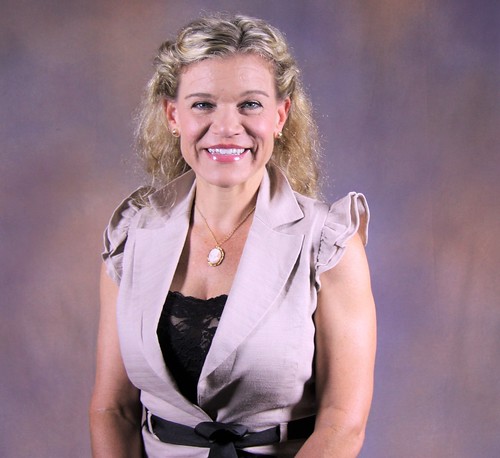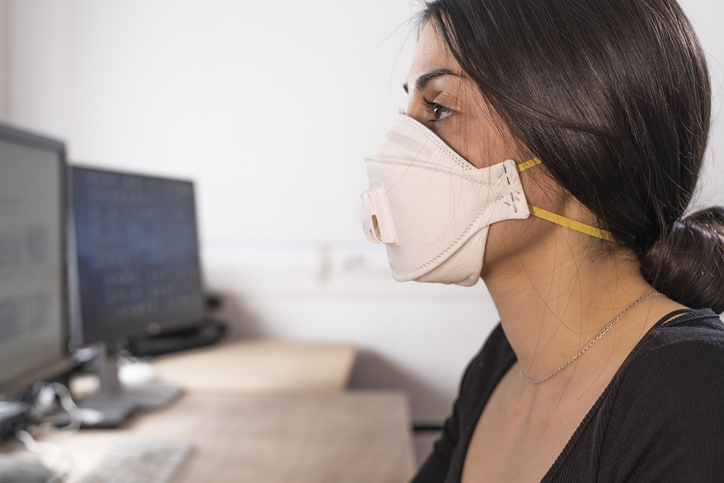Spanish professor describes how COVID-19 has affected area’s Hispanic community
Article body
Associate Professor of Spanish Jana Gutiérrez Kerns discusses below how the Hispanic community has dealt with the effects of COVID-19, the unique challenges it faces in dealing with a crisis of this nature and how students in the Department of Foreign Languages and Literatures have adjusted to remote instruction through it all.
As someone who works with the Spanish-speaking population in and around Auburn, what can you tell us about how this pandemic is affecting them, specifically?
The COVID-19 pandemic and quarantine response affects all of us. The Spanish-speaking population in and around the Auburn area is no different, in the sense that they too are physically vulnerable, economically impacted, socially distanced and psychologically distressed.
At the same time, there are some factors of particular concern to this community:
Linguistic barriers present an obstacle to receiving necessary information and attention. According to 2019 U.S. Census data, the Hispanic/Latino population in Lee county is 3.8%. This number may not seem high in comparison to some of the coronavirus hot spots we have seen in the United States—like New York City with an estimated 29% Latinx population or Los Angeles with 47%—but it is in line with regional metropolitan centers like Huntsville (5.07%), Birmingham (4%), Mobile (4.6%) and Atlanta (4.3%).
The main difference between Lee County and these other urban hubs is the lack of integration. Our Hispanic community is much less established and much more isolated and segregated, and there are fewer institutional resources readily available to them. They tend to be less educated, less organized and more transient. While the majority of foreign-born Hispanics have Mexico as their country of origin, over the past few years we have seen a demographic shift with a greater presence from Central American countries such as Guatemala, El Salvador, Honduras and Nicaragua. Spanish is not the first language for a great number of these people. There are about two dozen indigenous dialects spoken in Guatemala alone and millions of speakers from Mexico whose primary language is Nahuatl, Yucatec Maya, Mixtex or Zapotec. So, we have to realize that many members of the local Latinx community are communicating in Spanish and English as their non-native languages. Often it is not just a lone individual negotiating this linguistic terrain; rather, the community works together to exchange information. Translators and interpreters facilitate these exchanges, but more often than not, competent (though typically volunteer) bilingual spokespersons, experts and advocates serve as intermediaries.
I am encouraged that resource agencies such as the Centers for Disease Control and the Alabama Department of Health do offer public health bulletins in Spanish on their websites. But then we have to wonder about getting that critical messaging to the target population. Culturally, they may not know to access these sites. And with schools, churches and businesses under quarantine or modified operations, the primary source of information and gathering for the Latinx community is gone.
CULTURAL BARRIERS. Norms and protocols also vary in the Hispanic community, and even greetings are different. Kisses and hugs replace handshakes as the expected form of greeting, and the very concept of social distancing is interpreted quite differently. Families are larger and live in closer quarters. Hispanics here in the Auburn area are more likely to trust the news agencies of their country of origin or to rely on their social media networks for information in lieu of receiving consistent messaging from local schools, churches, employers and community agencies. The inconsistency leads to confusion and irregular application of recommendations.
SOCIAL AND MEDICAL PREDISPOSING RISKS. I am most concerned about the isolation during quarantine. Through our work with local and state medical agencies, we know that some of the risk factors for serious disease are higher in the Hispanic population (diabetes, pregnancy, overcrowding, lack of health insurance, etc.). There are many who participate in the economy as critical workers in the service industry, but who may not qualify for unemployment benefits or emergency government relief. This can lead to increased stress and anxiety in close quarters, thus aggravating domestic insecurity. And in times of distress, vulnerable individuals are more likely to become invisible and not reach out for help.
Who does the Hispanic community look to for information through a crisis like this?
The Hispanic community looks to each other first and then to trusted community partners, such as local advocacy organizations like Esperanza House in Auburn, ¡HICA! Hispanic Interest Coalition of Alabama in Birmingham or HOLA Hispanic Outreach Leadership and Action of Montgomery. Churches also play a vital role. Many of our local churches minister to the Latinx population by offering Spanish-language services and outreach. Local charitable organizations like food banks and not-for-profit medical clinics also serve as trusted sources for aid and information. Auburn University also has established working relationships and community partnerships with the Hispanic community, and these bonds are crucial in times of crisis.
How have you and your students adjusted to the significant challenges created by the pandemic?
I was encouraged that, for their individual case studies, all my students were able to establish new partnerships and secure informational interviews with professionals in the field. For example, one student learned of a crucial need for trained Spanish-speaking volunteers at Rape Counselors of East Alabama; as many as 30% of requests come from LatinX persons suffering sexual violence, and such sensitive personal conversations—as well as legal and medical interventions from trusted advocates—also require a high level of oral and writing proficiency.
Now more than ever, it is evident our obligation to extend beyond the confines of the campus to fulfill our shared mission. I am not unlike my colleagues in Liberal Arts in that we remain as invested as always in preparing skilled communicators and sharp critical thinkers to meet the challenges of these unprecedented times. Onward we continue! ¡Manos a la obra!
What other thoughts has your experience throughout this pandemic brought up to you personally, and why are the arts and literature important in times like these?
AU FAMILIA – We need to remember that the “Spanish-speaking” or “Hispanic” community of Auburn is diverse and omnipresent. We are all part of the Auburn Family (or “familia,” as we say in Spanish). We have faculty members and international graduate students from the Chilean tip of South America to the autonomous communities of Spain. We have LatinX heritage students in classes and numerous Spanish-speaking employees and staff members working to make operations run smoothly, not only on our campus, but also in our local residential areas. It is not at all unusual to hear Spanish spoken on our campus, and not just in a classroom. Our students and faculty regularly travel abroad to conduct research, share scholarship, complete internships and to study in authentic full-immersion environments.
EXPERTISE – I would like to respond on behalf of those of us in the College of Liberal Arts. We may not be the first responders the world calls upon during a global health and economic crisis. We don’t produce vaccines or make ventilators. Our research does not focus on market recovery or antibody testing. Ours is a different type of essential education. My primary area of expertise is literature—poetry written along a continuum of Spanish and English, to be exact. One might be tempted to ask, what good is poetry during a pandemic? My immediate reply—along with one of a global community of world readers, listeners and writers—is that poetry sustains your heart and soul. When we were hunkered down in quarantine, many of us looked to words for comfort and for connection.
The bright moments I experienced during the weeks of interruption were the Zoom sessions I spent with literary translation students reciting poems by poets on both sides of the illness metaphor, from physicians like Rafael Campo, who treats patients at two medical centers in Boston, to writers whose poems give personal testimony of ravishing diseases such as AIDS in the hauntingly acerbic final poems of Felipe Granados or breast cancer in the tender love poems of Nela Rio. This poetry provided us a context in which we might better understand our current situation. We also dove into the task of solving creative translation puzzles to make Pablo Neruda’s odes sing as beautifully in English as they do in Spanish, and this endeavor helped distract our anxiety. Another activity that proved beneficial was following the Twitter threads of our favorite writers from across the globe and even, in the case of a few bold researchers, conducting Zoom interviews with fellow quarantined writers. From page to stage, though it be in virtual literary salons and slams, poetry helps us connect by way of our common humanity. Currently, I am working on a project centering on the poetry of Julia Alvarez, and in her most recent novel (Afterlife 2020), she writes of language experts who have an “intense need to get not just the words but the world right.” Furthermore, she elaborates, “Literature has to pull its weight in the real world or else it’s of no use to us.” That about sums it up. When the world suddenly stops making sense, our words still matter. For, as the textbook title from our FLSP 3310 Spanish-English Translation and Interpreting reminds us, we are “Mundos entre palabras” (Worlds between Words).
Auburn University is a nationally ranked land grant institution recognized for its commitment to world-class scholarship, interdisciplinary research with an elite, top-tier Carnegie R1 classification, life-changing outreach with Carnegie’s Community Engagement designation and an undergraduate education experience second to none. Auburn is home to more than 30,000 students, and its faculty and research partners collaborate to develop and deliver meaningful scholarship, science and technology-based advancements that meet pressing regional, national and global needs. Auburn’s commitment to active student engagement, professional success and public/private partnership drives a growing reputation for outreach and extension that delivers broad economic, health and societal impact.






